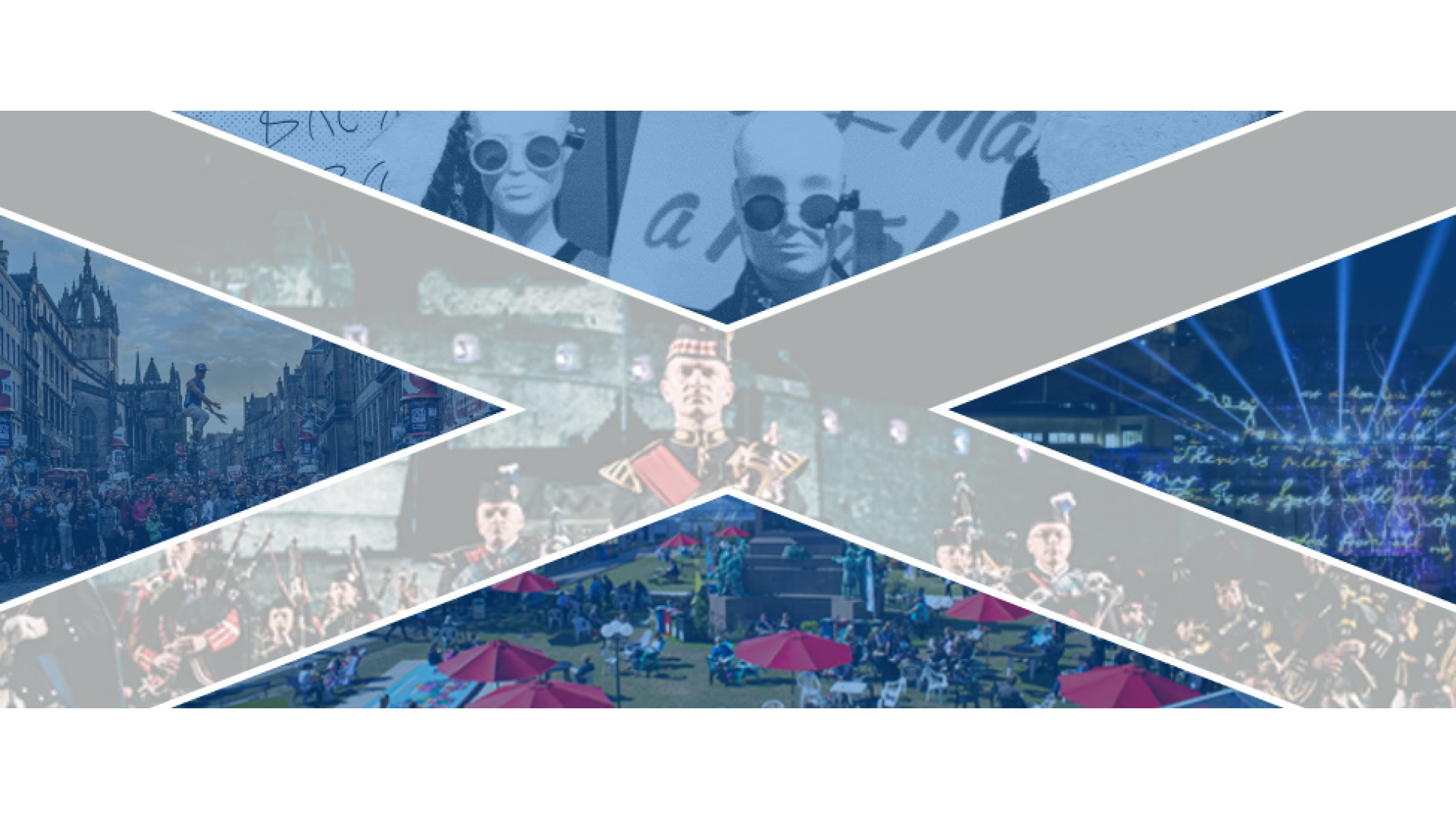The Uniquely Scottish Charm of the Edinburgh Festivals
This St Andrew's Day [30 November] we are proud, as we are every year, that the capital of Scotland becomes the world’s cultural melting pot during our festivals, with citizens of the city and the country joined by artists and audiences from every corner of the globe in celebration of culture and creativity.
Some people wonder whether these Festivals could just as easily take place in any city, not realising that the Festivals are authentically rooted in Edinburgh and have become part of the intangible heritage of Scotland.
As the great historian Sir Tom Devine says: ‘The Edinburgh Festivals are indeed a jewel in the Scottish crown which bring a matchless world-wide profile to our country.’ To fully understand the deep roots of the Festivals in Scotland’s soil, we’ll have to share with you a few stories…
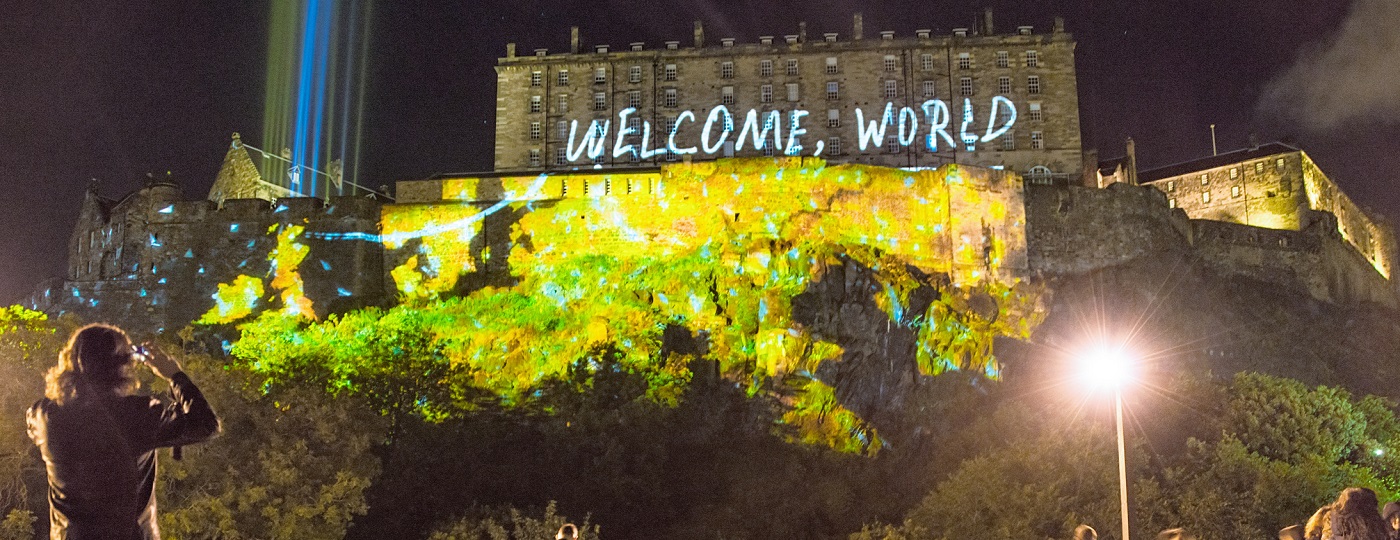 In 1947 Rudolf Bing [then general manager of Glyndebourne Opera], Sir John Falconer [Lord Provost of Edinburgh] and Henry Harvey Wood [head of the British Council in Scotland], came together to organise the first Edinburgh International Festival. In the wake of the devastation of World War Two it would, they said, "provide a platform for the flowering of the human spirit”. Not far from their minds was the fact that Edinburgh had played such a role before.
In 1947 Rudolf Bing [then general manager of Glyndebourne Opera], Sir John Falconer [Lord Provost of Edinburgh] and Henry Harvey Wood [head of the British Council in Scotland], came together to organise the first Edinburgh International Festival. In the wake of the devastation of World War Two it would, they said, "provide a platform for the flowering of the human spirit”. Not far from their minds was the fact that Edinburgh had played such a role before.
The Scottish Enlightenment of the eighteenth century had been an extraordinary flowering of rational thinking and scientific endeavour centred on the libraries, salons and universities of the country while institutions in continental Europe were under pressure from a succession of ruinous wars and regimes hostile to dangerous, revolutionary thinking. The Scottish Enlightenment impacted globally, influencing the US Founding Fathers and the great thinkers of Paris, London and Berlin, while also laying the foundations for the great Scottish discoveries and innovations of the nineteenth and twentieth century including television and penicillin.
When Rudolf Bing was travelling through Great Britain looking for a home for a great festival, the final choice of Edinburgh seemed like a natural fit given Scotland's pivotal role in the development of modern thought through thinkers who well understood the value of internationalism, co-operation and trust in building a better future for mankind – as the French philosopher Voltaire said, “we look to Scotland for all our ideas of civilisation.”
 The Edinburgh Festival Fringe began in the same year when eight theatre companies turned up, uninvited, alongside the acts performing in the first Edinburgh International Festival. From such humble origins the Fringe has grown to become the largest arts festival in the world. Some say that such an endeavour could have been born and grown up anywhere in the world. But that would be to forget that the environment which spawned the Edinburgh International Festival also played a key role in the foundation of the Fringe. .
The Edinburgh Festival Fringe began in the same year when eight theatre companies turned up, uninvited, alongside the acts performing in the first Edinburgh International Festival. From such humble origins the Fringe has grown to become the largest arts festival in the world. Some say that such an endeavour could have been born and grown up anywhere in the world. But that would be to forget that the environment which spawned the Edinburgh International Festival also played a key role in the foundation of the Fringe. .
Scotland’s influence in the Enlightenment period owed little to the government of the time, being instead down to the achievements of individuals and independent institutions, many of which were critical of traditional hierarchies. Freedom of expression was at the heart of the debate and unleashed a wave of boundless imagination and inspired creativity. This was the rich soil which saw the birthing of the Fringe concept in 1947, a massive innovation at the time and still so today: the first open access platform for creativity, long before social media was even dreamed of. More than 70 years later, there are over 200 fringes across the world, all taking their lead from Edinburgh. In fact the word ‘fringe’, coined in 1948 by the Scottish journalist Robert Kemp, has become a universal term for a certain type of artistic experience, a certain type of what we might call – given the history - creative enlightenment.
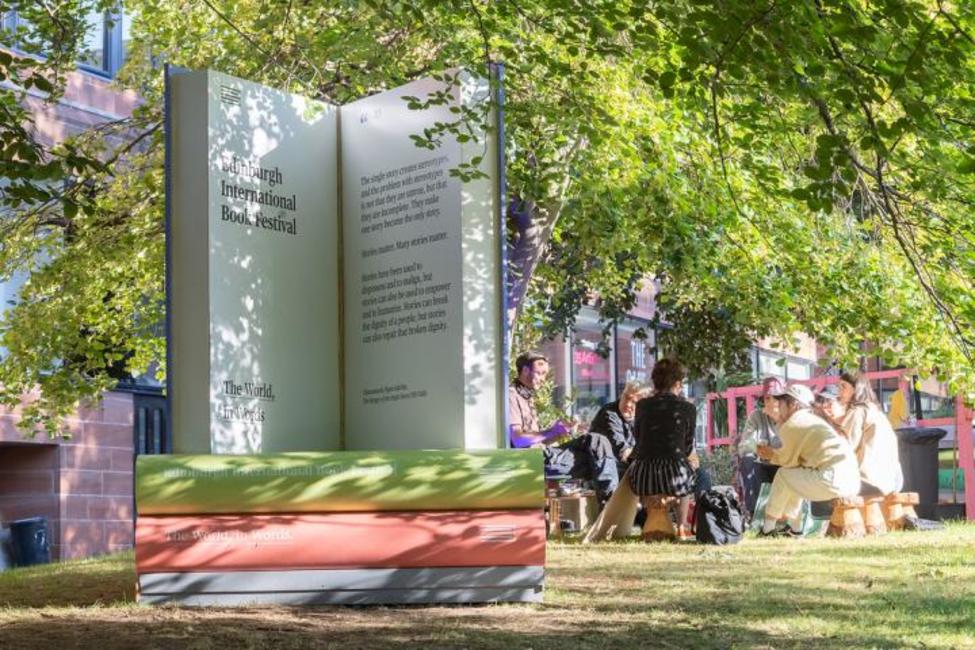 The enlightenment had many literary roots that left their mark on the city. The only train station in the world named after a novel; the largest statue to a writer; the world’s first circulating library; the creation of the Encyclopaedia Britannica; the oldest university English language faculty; the UK’s oldest literary prize, the world’s first UNESCO City of Literature. With a literary heritage spanning centuries and some of the most famous contemporary writers on the planet (is there anyone who hasn’t heard of JK Rowling?), cities don’t get more bookish than Edinburgh. You might say that the Scottish capital and books go together like a more amicable Jekyll and Hyde, which in turn was inspired by the capital’s architectural make-up – the split personalities of its Old and New Towns – and written by another of its legendary scribblers. So it should come as no surprise that the city also hosts the world’s largest, and arguably, most prestigious literature festival – the Edinburgh International Book Festival.
The enlightenment had many literary roots that left their mark on the city. The only train station in the world named after a novel; the largest statue to a writer; the world’s first circulating library; the creation of the Encyclopaedia Britannica; the oldest university English language faculty; the UK’s oldest literary prize, the world’s first UNESCO City of Literature. With a literary heritage spanning centuries and some of the most famous contemporary writers on the planet (is there anyone who hasn’t heard of JK Rowling?), cities don’t get more bookish than Edinburgh. You might say that the Scottish capital and books go together like a more amicable Jekyll and Hyde, which in turn was inspired by the capital’s architectural make-up – the split personalities of its Old and New Towns – and written by another of its legendary scribblers. So it should come as no surprise that the city also hosts the world’s largest, and arguably, most prestigious literature festival – the Edinburgh International Book Festival.
Since its inception, the Book Festival's home has been the beautiful Charlotte Square Gardens, centrally located in Edinburgh's world heritage listed Georgian New Town. Edinburgh, it has to be said, is not an average literary festival. Spanning nearly three weeks and with around 1000 authors, it is the biggest in the world, with eight theatres hosting simultaneous literary events all day, every day. The deep literary roots of the city explain this Festival success, having laid the foundation for today’s flourishing Edinburgh landscape of writing, publishing, reading and debating – reminding us of Louis Pasteur’s claim that Scotland had been the first nation to link its fortunes with the development of the human mind.
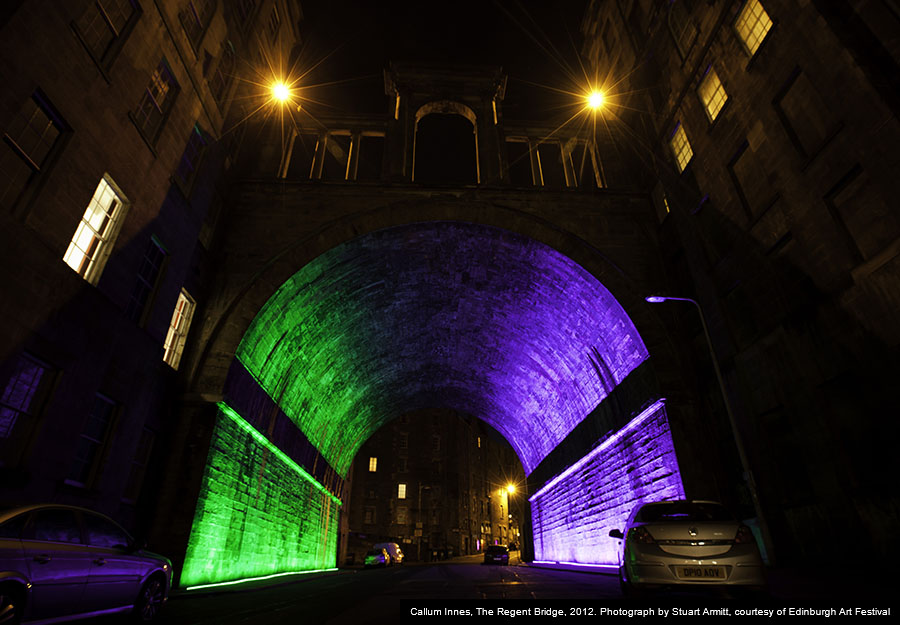 Such literary roots are mirrored in the visual arts. Whether you’re drawn to traditional or contemporary art, prefer a sculpture over a sketchbook or can’t get enough of all things abstract, Edinburgh’s melting pot of galleries has whetted the appetite of many an art lover for years. Ranging from grandeur to minimalist, the city also hosts the three National Galleries of Scotland – the Scottish National Gallery, the Scottish National Gallery of Modern Art and the National Portrait Gallery – and their respective national collections, while the Fine Art Society is one of the world’s oldest art dealerships. This explains Edinburgh's place at the centre of visual arts in Scotland and why it was felt that a visual arts festival would bloom in the city.
Such literary roots are mirrored in the visual arts. Whether you’re drawn to traditional or contemporary art, prefer a sculpture over a sketchbook or can’t get enough of all things abstract, Edinburgh’s melting pot of galleries has whetted the appetite of many an art lover for years. Ranging from grandeur to minimalist, the city also hosts the three National Galleries of Scotland – the Scottish National Gallery, the Scottish National Gallery of Modern Art and the National Portrait Gallery – and their respective national collections, while the Fine Art Society is one of the world’s oldest art dealerships. This explains Edinburgh's place at the centre of visual arts in Scotland and why it was felt that a visual arts festival would bloom in the city.
Founded in 2004, Edinburgh Art Festival is the platform for the visual arts at the heart of Edinburgh’s August Festivals, bringing together the capital’s leading galleries, museums and artist-run spaces in a city-wide celebration of the very best in visual art. Each year, the Festival features leading international and UK artists alongside the best emerging talent, major survey exhibitions of historic figures, and a special programme of newly commissioned artworks that respond to public and historic sites in the city. The lifetime of the Festival coincided with the emergence of Glasgow School of Art as one of the leading centres of the contemporary art world, producing six Turner Prize winners and 30% of nominees since 2005. Many of these, including Susan Philipsz and Nathan Coley, were awarded commissions by the Edinburgh Art Festival which has now become the UK’s largest annual festival of visual art.
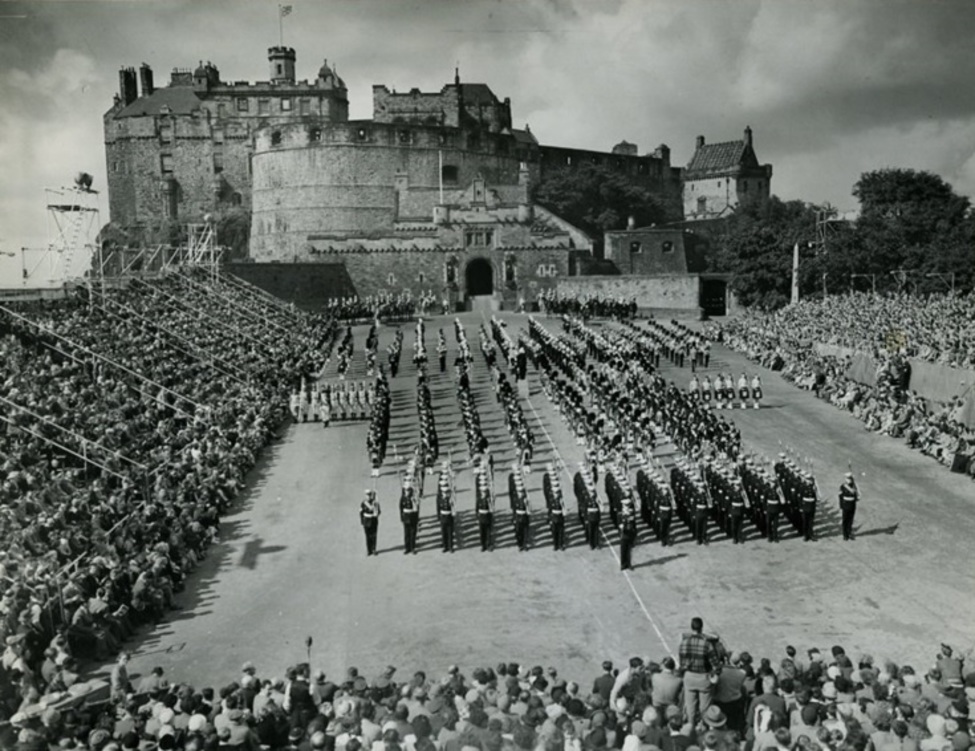 Visual displays of a different kind are on show outside Edinburgh castle every August. Many people distinctly remember sitting cross-legged as children in front of the TV, the volume on loud, watching as marching Scottish pipe bands filled the space in front of a magical looking castle, while girls wearing kilts danced in circles. For many this combination of kilts, bagpipes and Edinburgh Castle ‘is’ Scotland and could be nothing other than The Royal Edinburgh Military Tattoo.
Visual displays of a different kind are on show outside Edinburgh castle every August. Many people distinctly remember sitting cross-legged as children in front of the TV, the volume on loud, watching as marching Scottish pipe bands filled the space in front of a magical looking castle, while girls wearing kilts danced in circles. For many this combination of kilts, bagpipes and Edinburgh Castle ‘is’ Scotland and could be nothing other than The Royal Edinburgh Military Tattoo.
The story began almost seven decades ago and had humble beginnings. It was inspired by a simple show called 'Something About a Soldier', performed in 1949 Princes Street Gardens, as the Army's contribution to the Edinburgh International Festival and a symbol of the enduring role of the Army in Scottish life. The term ‘Tattoo’ comes from the early 17th century Dutch phrase doe den tap toe (‘turn off the tap’), a signal sounded by drummers or trumpeters to instruct innkeepers near military garrisons to stop serving beer and for soldiers to return to their barracks. It became a bit of a tradition, especially amongst the Scottish regiments with their marching bands, which endured into the 20th Century as a kind of evening entertainment for soldiers.
The first official Edinburgh Military Tattoo, with eight items in the programme, was held in 1950 with 6,000 spectators. Today there’s a nightly audience of 8,800, allowing 220,000 to watch the multiple live performances which now include international acts from all corners of the globe. With a gargantuan global audience, nothing can prepare the senses for this iconic cultural extravaganza that has a uniquely Scottish heartbeat.
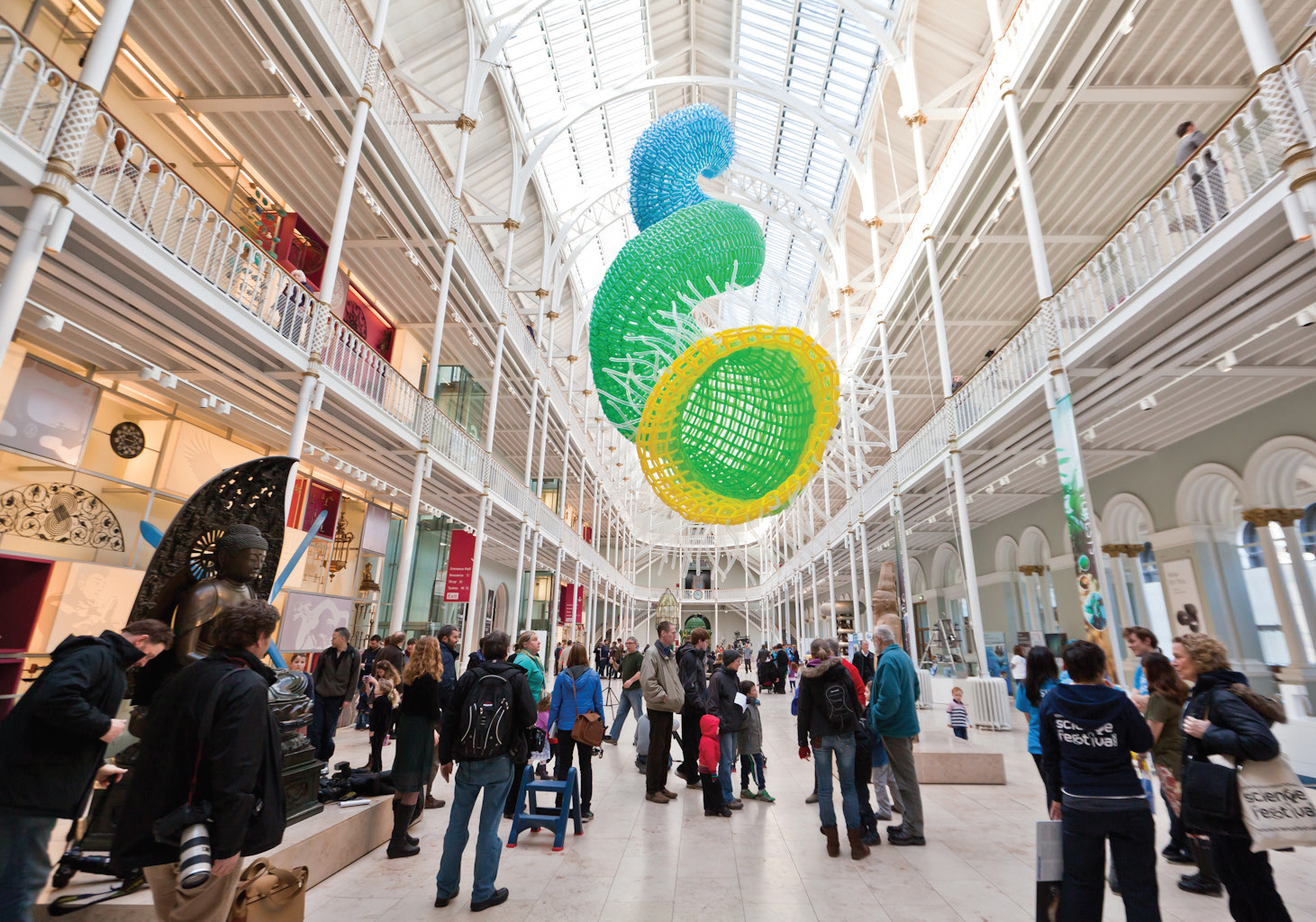 And speaking of heartbeats.....In the 1980s when it was time to take the festival formula, which until then had been confined to the arts, in to the scientific world there was one obvious place for that to happen: Edinburgh. That was not only because the city had established an international reputation for its performing arts festivals but because the city was historically linked with innovative developments in science. Take a walk around any area of Edinburgh and it won’t be long before you bump in to scientific thought or thinkers. Ambling down George Street you’ll find the statue of James Clerk Maxwell who Einstein believed to be the father of modern physics or climbing up on Salisbury Crags you’ll be on the ground where James Hutton created the study of geology, and walking by Edinburgh University you'll be passing the place where 'the Edinburgh Seven' studied medicine - the first women in Britain enrolled to do so.
And speaking of heartbeats.....In the 1980s when it was time to take the festival formula, which until then had been confined to the arts, in to the scientific world there was one obvious place for that to happen: Edinburgh. That was not only because the city had established an international reputation for its performing arts festivals but because the city was historically linked with innovative developments in science. Take a walk around any area of Edinburgh and it won’t be long before you bump in to scientific thought or thinkers. Ambling down George Street you’ll find the statue of James Clerk Maxwell who Einstein believed to be the father of modern physics or climbing up on Salisbury Crags you’ll be on the ground where James Hutton created the study of geology, and walking by Edinburgh University you'll be passing the place where 'the Edinburgh Seven' studied medicine - the first women in Britain enrolled to do so.
Edinburgh is an outdoor museum of scientific thought. But its claim to the science crown is also in the present day through such developments as the first cloned animal, Dolly the Sheep, visible in the National Museum or the work of Professor Higgs of Higgs Boson fame at the University of Edinburgh. So the city was an obvious choice to host the world’s first science festival and in choosing the world’s first woman in space, Valentina Teresckova, to open the Edinburgh Science Festival in 1989, it was identifying the very values that were key to the other Festivals in the city - innovative thinking and an international outlook.
 One of the great scientific developments of the last century was the moving image. During the first half of the twentieth century, cinema came to form a significant presence in the life of most people and the first moving picture in Scotland was shown on 13 April 1896, in the Empire Palace Theatre, Edinburgh [now the Festival Theatre]. In those early days the principal source of systematic serious film-going was the film society movement and the Edinburgh Film Guild was at the forefront having started screening films in 1930. The Guild expanded on the work of the London Film Society, after it disbanded in 1939, and strove to engage with the widest variety of film from different cultures and genres, with this ethos leading them to establish in 1947 the UK’s first international film festival – the Edinburgh International Festival of Documentary Films, which became the Edinburgh International Film Festival,
One of the great scientific developments of the last century was the moving image. During the first half of the twentieth century, cinema came to form a significant presence in the life of most people and the first moving picture in Scotland was shown on 13 April 1896, in the Empire Palace Theatre, Edinburgh [now the Festival Theatre]. In those early days the principal source of systematic serious film-going was the film society movement and the Edinburgh Film Guild was at the forefront having started screening films in 1930. The Guild expanded on the work of the London Film Society, after it disbanded in 1939, and strove to engage with the widest variety of film from different cultures and genres, with this ethos leading them to establish in 1947 the UK’s first international film festival – the Edinburgh International Festival of Documentary Films, which became the Edinburgh International Film Festival,
The first statement about films at the festival was made appropriately by the Scots film-maker John Grierson, arguably the founder of documentary, who was then Director of Mass Communications at UNESCO in Paris. His appearance was no doubt due to the fact that the Guild’s secretary – Forsyth Hardy – had edited the seminal book ‘Grierson on Documentary’ in 1946. Remarking on the daring gesture of establishing the festival, Grierson said he found it appropriate and natural that the interest in social realism on the screen should develop from the land that had produced Robert Burns. From this start that saw 75 films presented from 18 countries – with the honour of first film shown going to Humphrey Jennings' The Cumberland Story - the foundations were laid for what until recently was the world’s longest continually running film festival. As many will know, our Film Festiuval went into administration earlier this year, but we remain hopeful that it will return to our screens in the not too distant future.
The growth of cinema and television did not however kill the desire for more traditional Scottish forms, such as storytelling. That Scotland has one of the world’s most admired storytelling festivals should come as no surprise. The oral tradition is strong in northern European cultures in general and Scotland in particular, through the great Gaelic traditions. The storytelling festival gathering – in Gaelic, the ceilidh – is seen as art and hospitality combined, with true storytelling happening when the story is told person to person, live, without print or technology.
The founder of the Scottish International Storytelling Festival, Donald Smith, was drawn into a ferment about Scottish cultural identity and values in his early adulthood and in that crucible he discovered some very old storytelling traditions which seemed to him to meet a contemporary need. And it was at that point that he and others started to try and reconnect live storytelling traditions with contemporary society launching the festival in 1989. The Festival now has its home in the Scottish Storytelling Centre – the world’s first purpose built storytelling centre - incorporating John Knox House which dates back to 1470, making it and the attached Moubray House, the oldest, original medieval building surviving on the Royal Mile. The house is associated with one of the most dramatic and turbulent times in Scottish History – the Scottish Reformation – which resulted in the outbreak of civil war and the abdication of Mary, Queen of Scots. An appropriate place to tell a few tales, tall or otherwise.
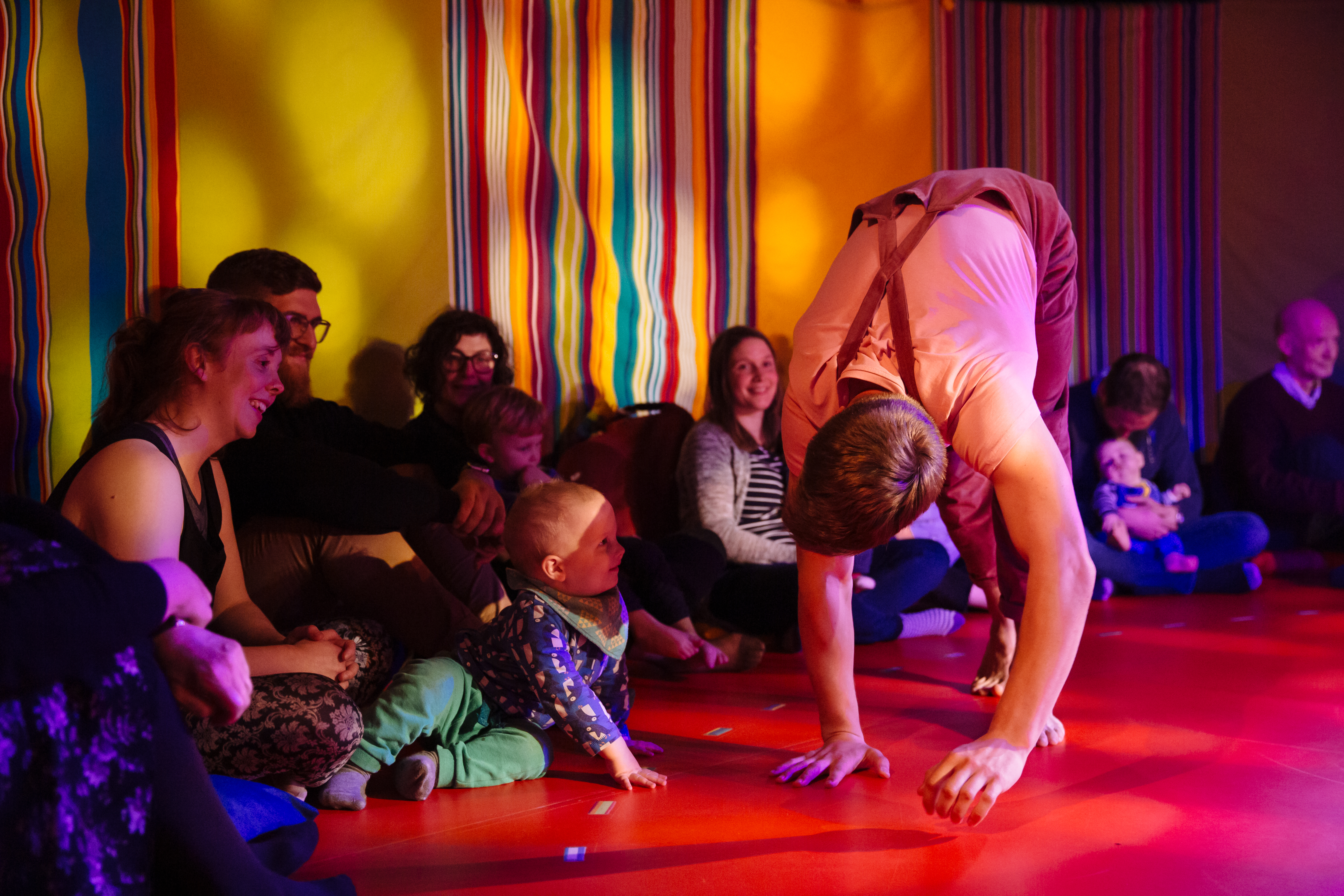 Children are a central audience for the Storytelling Festival and hold a special place in Scottish society, being a subject for writers and artists across many centuries: the National Library of Scotland holds the first book for children printed in Scotland around January 1519. In terms of scripted plays it is widely believed that theatre for children started in the late nineteenth century in Europe and took the form of touring companies with dramatisations of folk and fairy tales - and the first widely recognised such work in the UK was Scottish writer J.M. Barrie’s Peter Pan, closely followed by Toad of Toad Hall, adapted from the work of another Scottish writer Kenneth Grahame. However over the years work for children became locked in the world of ‘theatre in education’, with the small number of children’s theatre companies fighting continuing battles to have their work recognised by funding bodies or local authorities.
Children are a central audience for the Storytelling Festival and hold a special place in Scottish society, being a subject for writers and artists across many centuries: the National Library of Scotland holds the first book for children printed in Scotland around January 1519. In terms of scripted plays it is widely believed that theatre for children started in the late nineteenth century in Europe and took the form of touring companies with dramatisations of folk and fairy tales - and the first widely recognised such work in the UK was Scottish writer J.M. Barrie’s Peter Pan, closely followed by Toad of Toad Hall, adapted from the work of another Scottish writer Kenneth Grahame. However over the years work for children became locked in the world of ‘theatre in education’, with the small number of children’s theatre companies fighting continuing battles to have their work recognised by funding bodies or local authorities.
Something had to change – and a movement began which sought to explore the possibilities of stretching children’s theatre within the context of a storytelling culture. So the seeds were sown for the opening in Edinburgh of the then ‘Scottish’ International Children's Festival, as an annual showcase for the best children’s theatre from around the globe. That it has done its job can be seen in the comment many years later by the renowned critic Joyce McMillan: “After 20 years as a professional theatre critic in Scotland, I can say honestly that, in my opinion, the country's finest theatre festival is the Edinburgh International Children’s Festival’.
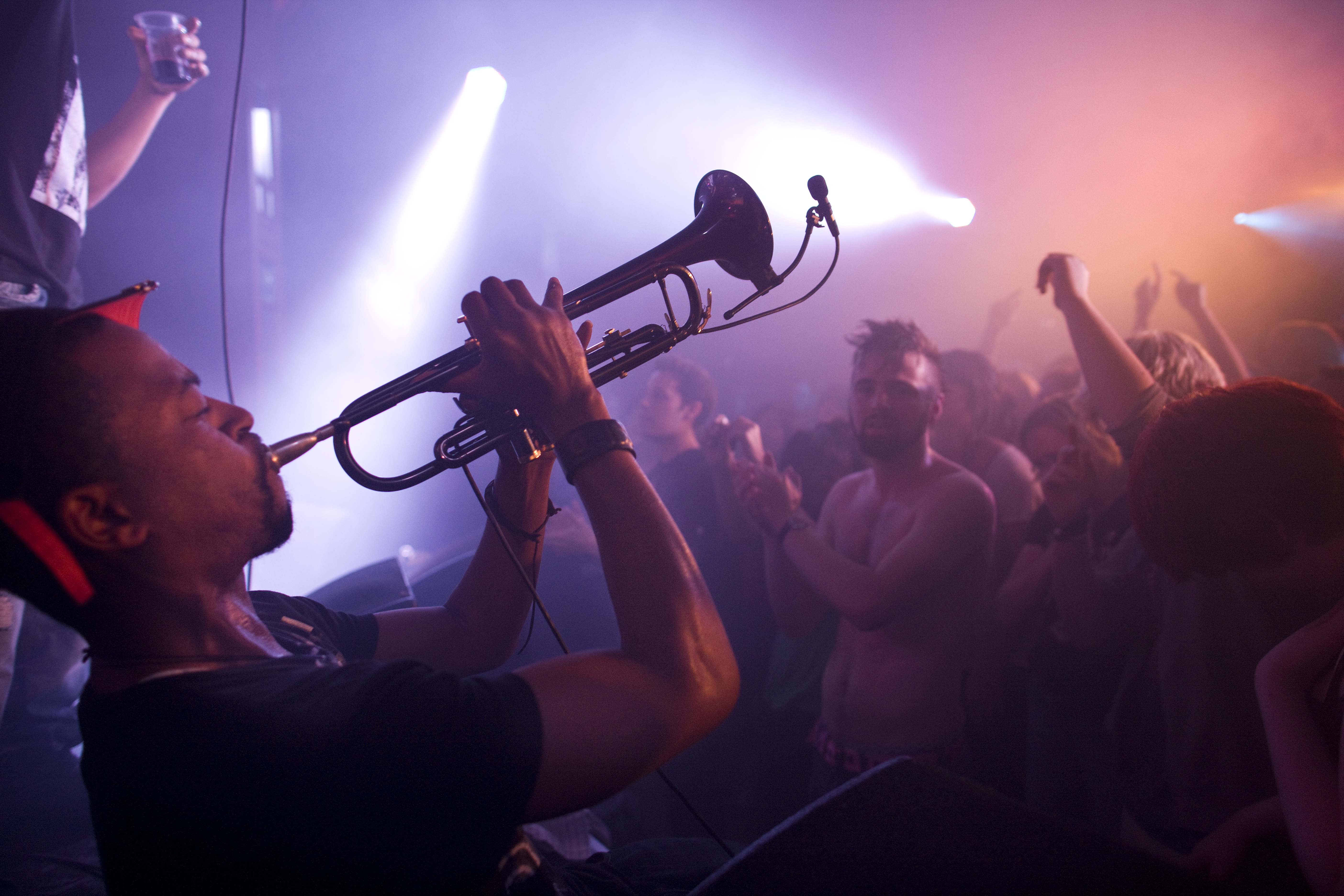 The theatre offer for young people in Edinburgh is complemented by a music offer for adults, especially through its Jazz and Blus Festival. Now there’s no way that Scotland can point to jazz in its remarkable history given that jazz is primarily a genre that originated in the African-American communities of New Orleans during the late 19th and early 20th centuries. But it is clear that Jazz developed from roots in ragtime and blues, with blues being a fusion of several older styles of American music, especially Black spirituals and Appalachian folk music – and it was Appalachia that was settled by Scottish immigrants in the 18th century, who brought their music including the traditional ballad structure.
The theatre offer for young people in Edinburgh is complemented by a music offer for adults, especially through its Jazz and Blus Festival. Now there’s no way that Scotland can point to jazz in its remarkable history given that jazz is primarily a genre that originated in the African-American communities of New Orleans during the late 19th and early 20th centuries. But it is clear that Jazz developed from roots in ragtime and blues, with blues being a fusion of several older styles of American music, especially Black spirituals and Appalachian folk music – and it was Appalachia that was settled by Scottish immigrants in the 18th century, who brought their music including the traditional ballad structure.
This is not to say that the Scots had a hand in the invention of jazz but rather to explain why jazz found fertile soil when it crossed the Atlantic to Scotland. Although there had been live jazz in Edinburgh before WWII, it was the international revival of traditional jazz in the 1940s and 1950s which brought about a major increase in interest in Edinburgh. Bands led by Bob Craig, Mike Hart, trumpeter Charlie McNair together with drummer George Crockett’s ‘Nova Scotians’ appeared and became the core of the Edinburgh jazz scene - and it was the aforementioned Mike Hart who took inspiration from a visit to the Sacramento Jazz Festival to establish the Edinburgh Jazz and Blues Festival, now the UK’s largest independent jazz festival.
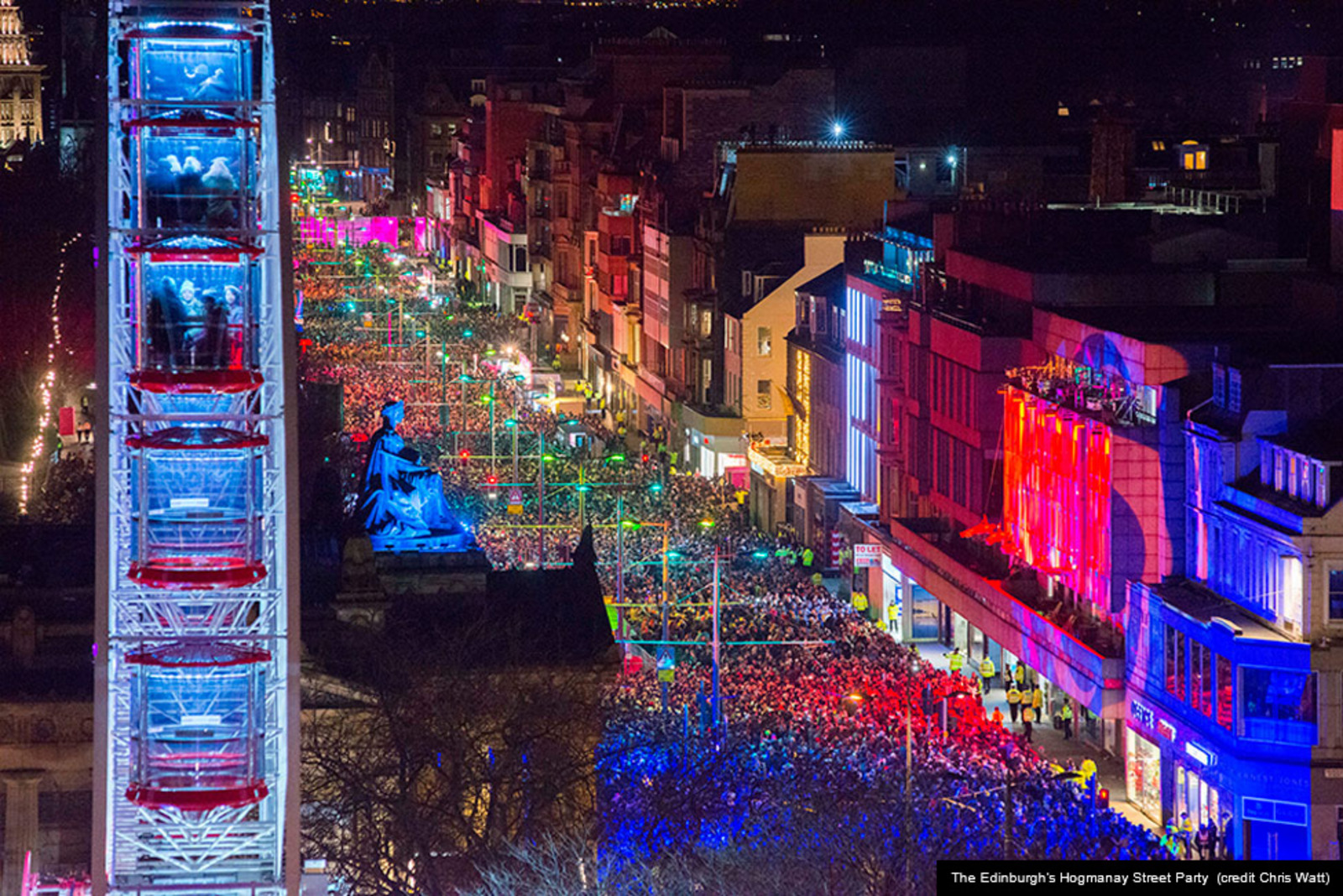 Music is also at the core of the city's end of year - or is it the beginning of the year? - festivities. When New Year’s Eve comes around each year, all manner of cities around the globe battle against each other to host the most elaborate firework displays centred around that one minute up to and after midnight. The people gathering in New York’s Times Square or around Sydney’s Harbour Bridge or by the London Eye queue for hours for that midnight moment and then queue for hours to get home. But in Scotland, and especially Edinburgh, it’s done differently and the reason is rooted in the history of the city.
Music is also at the core of the city's end of year - or is it the beginning of the year? - festivities. When New Year’s Eve comes around each year, all manner of cities around the globe battle against each other to host the most elaborate firework displays centred around that one minute up to and after midnight. The people gathering in New York’s Times Square or around Sydney’s Harbour Bridge or by the London Eye queue for hours for that midnight moment and then queue for hours to get home. But in Scotland, and especially Edinburgh, it’s done differently and the reason is rooted in the history of the city.
The roots of Hogmanay - the Scots word for the last day of the year - probably reach back to the celebration of the winter solstice among the Norse, as well as incorporating customs from the Gaelic celebration of Samhain. Following the Reformation, Protestant elders insisted that "Christ's Mass", with its associations with Catholicism, should be just another working day. And so the pre-Christian ritual of celebrating the new year consequently took on greater significance.
In 1993 two local promoters, Barry Wright and Pete Irvine, produced a report for Edinburgh which basically said that the city had a fantastic venue and site, Scotland was the home of Hogmanay, and Edinburgh should own it - consequently pitching the idea for a Hogmanay Party. And that party would not just last the few minutes around midnight, but last for three days bringing residents and visitors together in a range of music and cultural activity. That they succeeded was clearly shown when before long the Edinburgh's Hogmanay celebrations were included in Dave Freeman’s 100 Things To Do Before You Die.
